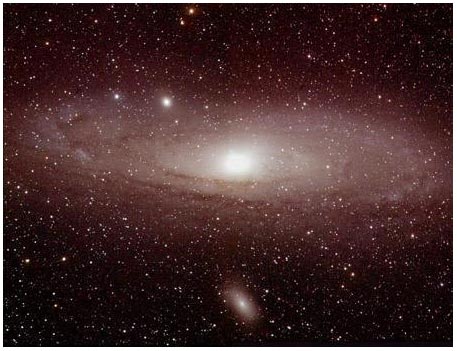New method of calculating the weight of remote black holes
At the June 2 meeting of the American Astronomical Community at St. Louis, the researchers gave astronomers a simple new way to learn about black holes 8 billion light-years away - far more than the black holes measured today thousands of times. .
Dr. Marc Seigar, a lecturer in physics and astronomy at the School of Mathematics and Science at the University of Arkansas, Little Rock, and his team have concluded that the black hole at the center of a spiral galaxy is larger, the ring The galaxy's surrounding itself is more compact. If true, this simple relationship will give researchers a way to learn about black holes easily.
'This is a really easy way to determine the weight of super-giant black holes at the center of the galaxy far away from us. We have a way to measure the size of those distant black holes. '
Because supermassive black holes are discovered in galaxies near us, researchers are still determining their weight by observing stars that move around the centers of these galaxies so quickly. Come on. But that method only works for galaxies that are quite close to us.
'For more distant galaxies we are talking about, you must find alternative methods. And we found such a method. '
The method he describes with the Astronomical Community involves taking a picture of a galaxy far away and measuring the tightness of the coils surrounding the galaxy, or the twisted angle. He determined that the greater the weight of the black hole, the more tightly bound the spiral around the galaxy, meaning the twist angle is smaller.
Seigar's team studied photographs of 27 spiral galaxies including our own galaxy, and the closest neighbor, the Andromeda galaxy. Galaxies with the smallest black holes have the highest twist angle of about 43 degrees. Galaxies with the largest black holes have an angle of only about 7 degrees between the central protrusions.

Andromeda Galaxy.(Photo: Chaco Culture NHP Observatory)
'One of the important reasons you need to know about distant black holes is that when you observe, you only see their condition in the past, so you also need to know the weight of the black hole increases like that. over time. '
The black holes he was working on were super giants, folding our sun millions or billions of times. Since they appear to be at the center of all galaxies, they may be key elements of galaxy formation right from the beginning.
His work also shows that the weight of a black hole may depend on how dark matter is concentrated in the center in a galaxy. 'But that is only a theory and needs to be proved. We will study about that. '
Seigar returned to UALR in 2007 to continue his position as a project assistant scientist at the University of California-Irvine. He was a postdoctoral researcher at the University of California-Irvine, an assistant professor at the University of Hawaii-Hilo, a postdoctoral researcher at the Royal University of London and Ghent University in Belgium. He is also an astronomer visiting the Space Telescope Science Institute.
Seigar received his Ph.D. in Astrophysics at John Moores University, Liverpool, currently teaching introductory astronomy at UALR as well as conducting research on structure, kinetics and star formation in spiral galaxies. , and the nature of light in galactic beams.
'Since my thesis, I am very interested in the general structure, morphology and dynamics of nearby galaxies, especially disk galaxies.'
He also participated in the Carnegie-Irvine (CINGS) Neighboring Galaxy Study, a comprehensive infrared and optical photographic study of the 600 brightest galaxies in the southern hemisphere sky, made possible through the Glass. Du Pont astronomical diameter of 2.5 meters at Las Campanas Observatory. He also participated in the Arkansas Galaxy Evolution Study (AGES), which is part of the work to investigate the supermassive black holes in the universe.
- Millions of black holes are hiding in our galaxy
- Decoding mistakenly thought that the black hole of the universe is
- Discover the mystery of the most exotic black holes in the universe
- Three huge black holes are about to collide in the universe
- Why can black holes glow?
- Unexpectedly discovered 5 mysterious black holes in the universe
- The galaxy has 3 black holes
- Detected stunned the power of the supermassive black holes
- For the first time, two black holes revolved around each other
- What if a black-sized black hole attacked the Earth?
- The impact sound of two black holes: surprisingly gentle and melodious
- The supermassive black hole is 20 billion times more massive than the Sun
 Van Allen's belt and evidence that the Apollo 11 mission to the Moon was myth
Van Allen's belt and evidence that the Apollo 11 mission to the Moon was myth The levels of civilization in the universe (Kardashev scale)
The levels of civilization in the universe (Kardashev scale) Today Mars, the sun and the Earth are aligned
Today Mars, the sun and the Earth are aligned The Amazon owner announced a secret plan to build a space base for thousands of people
The Amazon owner announced a secret plan to build a space base for thousands of people